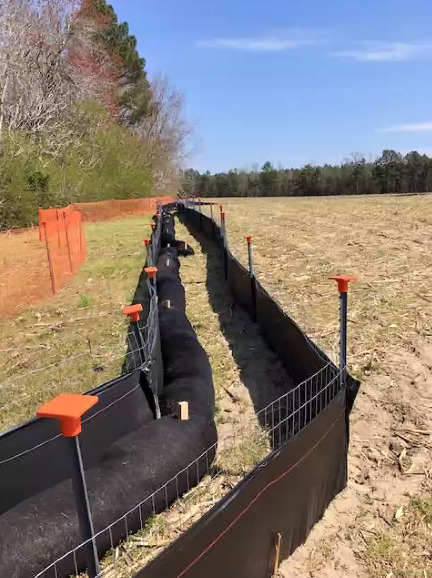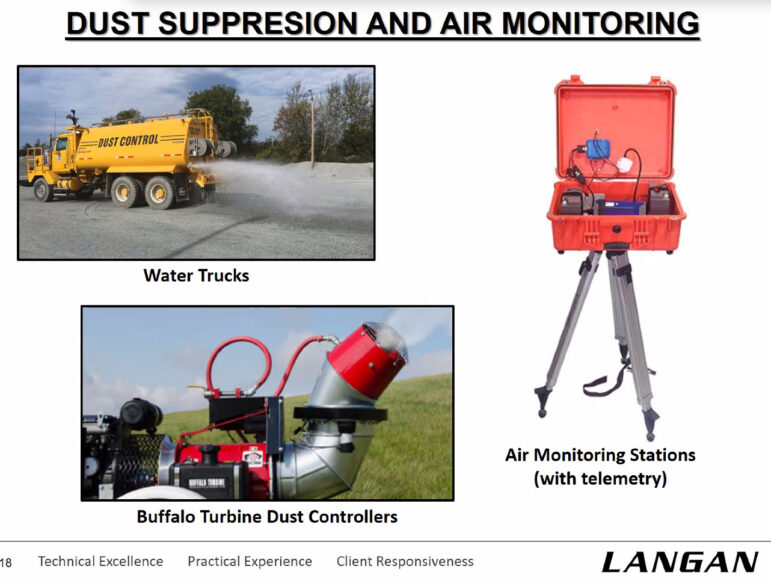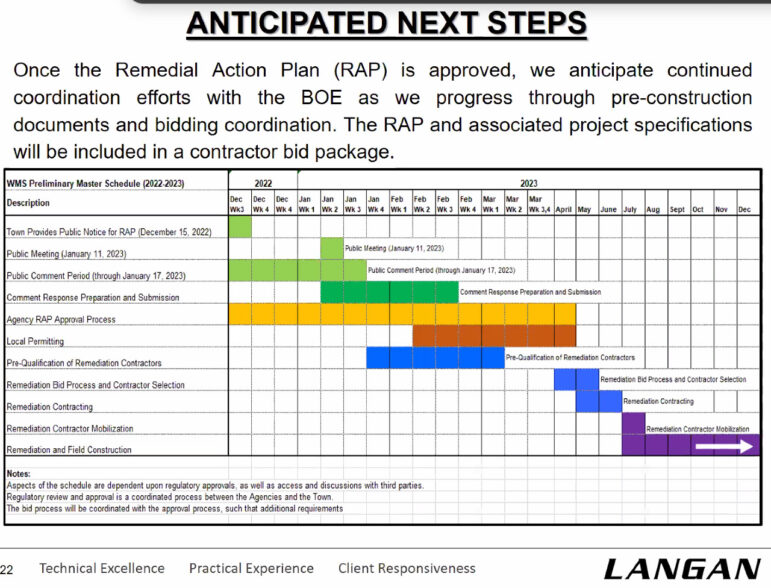Wednesday night’s public hearing at Western Middle School brought an outpouring of support for proposed remediation of contaminated soil. The audience was representatives of DEEP and the EPA.
The proposal is to remove two feet of soil across the playing fields and vegetated slopes.
The fields have been fenced off since 2016.
Families attended an open house in the gym prior to the public hearing and were able to ask questions one-on-one with the experts.

Panelists included DEEP project manager Jeffrey Wilcox, US EPA project manager Katherine Woodward, senior environmental manager Patrick Haskell from AECOM and both Jamie Barr and environmental engineer Ryan Wohlstrom from Langan.
Mr. Wohlstrom said when WMS was constructed in the 1950s, contaminated fill was trucked in to build the athletic fields, including PCBs, chlorinated solvents, petroleum compounds, heavy metals and pesticides.
He said that of the hundreds of soil samples taken, almost half were clean.
“In some areas we can have a clean sample and find it is next to an area that has high impacts,” he said.
Mr. Wohlstrom said groundwater samples showed impacts in soil had not migrated down to ground water, though they planned conduct post-remediation groundwater monitoring.

Instead of removing all the fill on site, which would be the most expensive and disruptive the community, the recommended alternative #2, “a risk-based strategy.”
During the remediation, they will employ strategies including dust suppression and erosion control.
The work will cost an estimated $19.2 million. It is estimated to take 144 work days, with an average of 30 trucks hauling waste and 30 trucks hauling clean backfill each work day. With a 10-hour work day, this is an average of 6 trucks per hour entering and leaving the site.
As for the artificial turf, like at GHS, they plan to use Envirofill for the fill material, which they described as low maintenance, safe and having a 16-year warranty.
Mr. Wohlstrom said the plan is to be meticulous about dust suppression. Water trucks will actively spraying roads leading into the construction site. Air monitoring stations will track dust and trigger more dust suppression. Heavy equipment coming and going from the site will be decontaminated with a high pressure wash.
They will expand and improve an existing access road at the northeast corner of the athletic fields, and construction vehicles will enter and exit from there rather than the school entrance.
Mr. Haskell from AECOM shared a timeline. He said the bid process should be done in time to get work started in summer 2023.





PUBLIC COMMENT
Board of Education Chair Joe Kelly announced applauded the 117 people in attendance for turning out after years of meetings.
While dozens testified in favor of the remediation plan as presented, most comments focused on years of lost PE, sports and time outdoors for children.
In fact, not only have two classes graduated without ever setting foot on the fields, but for students from feeder schools Hamilton Ave School and New Lebanon School, where fields were also shut down for a time, this meant additional years without use of school fields.
Laura Mummolo, a parent who said her family had moved to town from New York City, talked about being better stewards of the land going forward.
“I really hope we’ve learned something,” she said. “I’m going to challenge everybody, including elected officials. We knew we dumped really bad things in two locations, and probably several others from our incinerator and many other companies. In the 50s 60s and 70s there weren’t laws in place in an effort to protect our children, our ground our groundwater, but we have laws in place now.”
“We need to be smarter about the land that we live on and send our children to school,” Mummolo said. “That starts with everybody contributing to that vision. We got very lucky, and so did GHS, that we found what was under the land, even though we knew it was there.”
Don Mohr, from the Parks & Recreation Dept, talked about the potential of the WMS field complex to accommodate football, soccer, lacrosse, rugby, flag football, and softball, benefiting not only the school community, but the entire town. Like others, he noted the town has a shortage of fields.
Mr. Mohr said that with artificial turf installed after remediation, the school’s 90-foot baseball diamond could accommodate Greenwich High School baseball tryouts, practices and games, which would be helpful as they begin practice in mid-March when grass fields are unavailable.
Further, he said the outfield area could be set up for other sports including field hockey or soccer, and that Parks & Rec anticipated gaining more than 1,900 hours of field time for community use once the fields reopen.
Elected officials turned out in support of the plan too, including First Selectman Fred Camillo, BOE member Karen Hirsh, BET members Laura Erickson and Leslie Moriarty, and State Senator Ryan Fazio. State Rep Steve Meskers (D-150) sent a statement in support of the project.
Of option 2, former State Rep Mike Bocchino (R-150), said “(Option 2) was the safest remediation process we could possibly agree upon….It will also be one of the quickest ways to get these kids back onto the field.”
Bocchino added that he hoped that once remediated and turfed, the field will be illuminated.
“We are going to potentially have one of the greatest sports complexes Greenwich has ever seen.”
Phil Tarantino, a WMS PE teacher for 22 years, recalled the day principal Gordon Beinstein told him the fields would be fenced off in 2016.
“Luckily in working with Don Mohr and the town we were able to use Strazza Field across the street. As PE teachers, we used bikes and the kids ran from our school to Strazza Field and in a short 42-minute period, we did our best to give them the PE curriculum, which is super challenging.”
Later, he noted that when a small portion of the field was reopened they were allowed the return to campus. However, in spring 2020, Covid hit and students lost the use of their gymnasium.
“For seven years everyone had worked to give the kids the best experience possible, but sports team haven’t been able to practice. Instead they’ve taken a bus to Tuefel Field. Home games have been impossible,” he said. “If you want to talk about school spirit, if you ever came to one of our basketball games, or a championship or tournament, it’s packed and the kids can’t wait to play in front of their peers. It’s been so impactful. The kids have been resilient enough.”

Francia Alvarez from the Greenwich Tree Conservancy expressed support for the remediation plan, but she said she hoped as many of the existing trees could be saved as possible.
“Many trees were removed at New Lebanon School and the Tree Conservancy does not want to see that again here,” she said.
Patrick Haskell said Langan would do a tree survey to identify species and work with Greenwich Tree Warden Dr. Greg Kramer to make an informed judgement about which trees may be saved.
Clare Kilgallen pointed out that the field was used by more than sports teams, and was an amenity for the entire neighborhood.
She said had the overwhelming support of the Byram neighborhood and the entire town.
“It addresses the issues. It meets standards. And the project is sensitive to the surrounding Byram community of which I am a resident,” she said.

Peter Quigley from RTM district 3 said he’d been urging cleanup of contaminated sites in town for many years, and that the site should be cleaned up “as deep and far down as you can.”
He urged against using artificial turf.
“You want to use natural grass, not artificial turf because of the chemicals in the turf,” Quigley said. “People are excited about this. This whole project is about the health and safety of students and everybody in the site, and all who have public access. You want these sites to be clean.”
“I have been asked by a constituent here, who came to us on the RTM Land Use committee eight or nine years ago. Her name is Dawn Fortunato. She ought to get some credit in getting this thing started,” Quigley said, adding that the state needed new regulations to deal with soil testing at public sites.
Back in 2015, Ms Fortunato first voiced concerns about contamination from the incinerator that had burned at the dump adjacent to WMS from 1938 until 1978. She brought it up at the time because in 2015 the New Lebanon building committee was exploring the idea of housing students in modular classrooms on the field at Western while their new school was under construction.
Fortunato and Mike Finkbeiner took soil samples in the vicinity of Holly Hill and Western Middle School and had them tested, resulting in contamination.
The Town then hired environmental Langan, who found elevated levels of arsenic. From there, the CT Dept of Public Health requested additional testing. The results caused the fields to be fenced off.

Landscape architect Peter Alexander suggested a voluntary, anonymous survey of Western Middle School alumni to get an idea of cancer rates.
He asked about the water table and whether the hydrostatic water pressure and the direction of subsurface runoff had been assessed.
Mr. Haskell said groundwater flowed to the southeast. “Overland flow varies. It follows the topographic pathways, but they flow in all directions off the fields and are collected by stormwater infrastructure that drains to the wetlands,” he said.

Dr. Toni Jones said numerous letters had already been submitted, but public comment period remains open until January 17.
Written comments may be submitted to: Jeffrey Wilcox, CT DEEP79 Elm Street, Hartford, CT 06106
[email protected]
